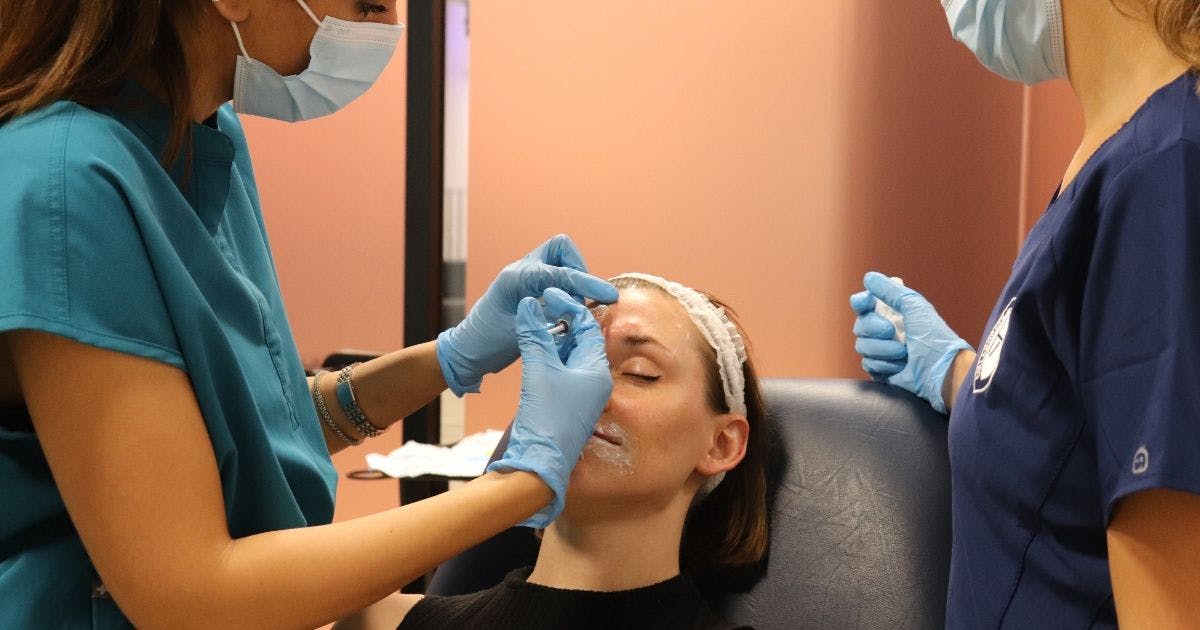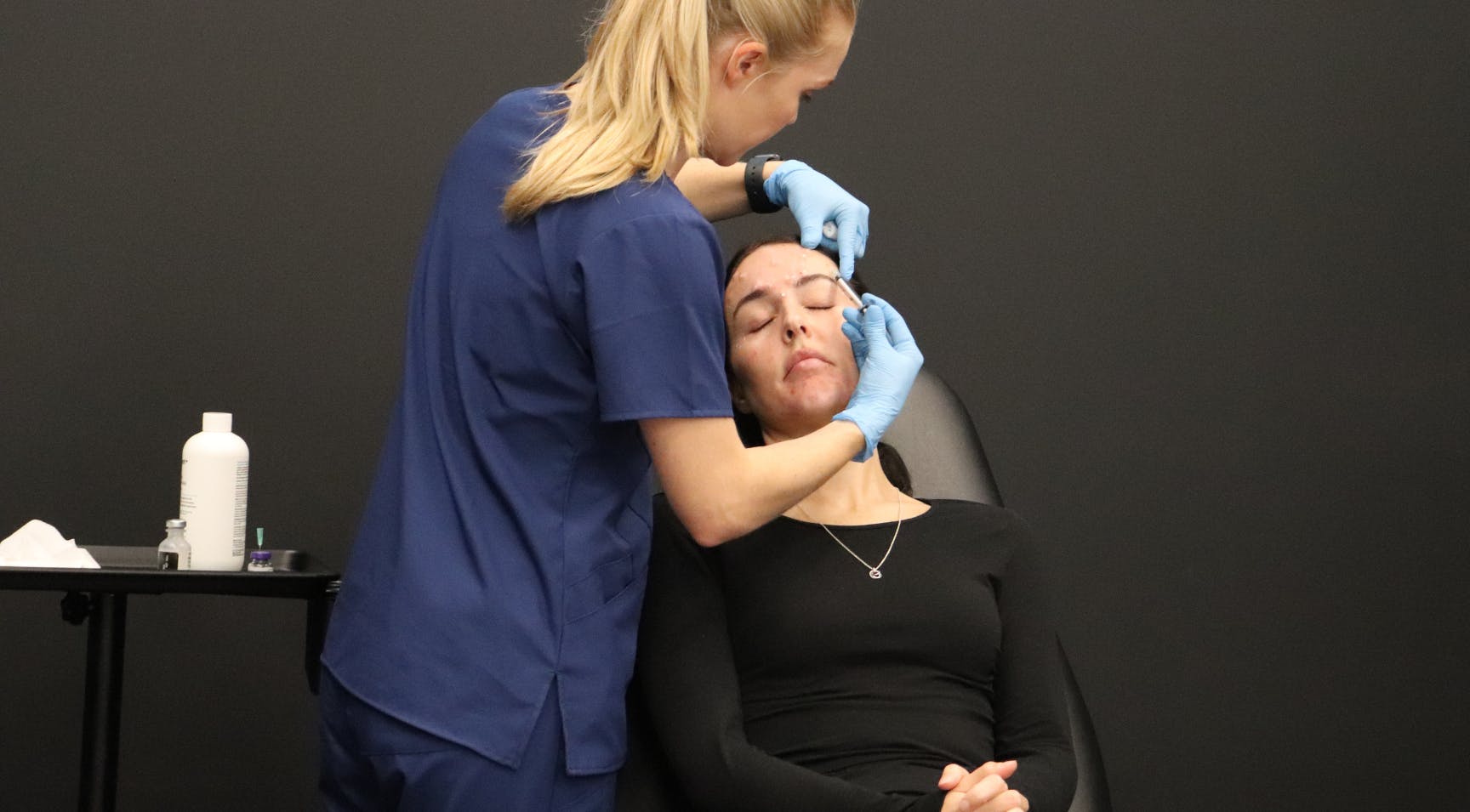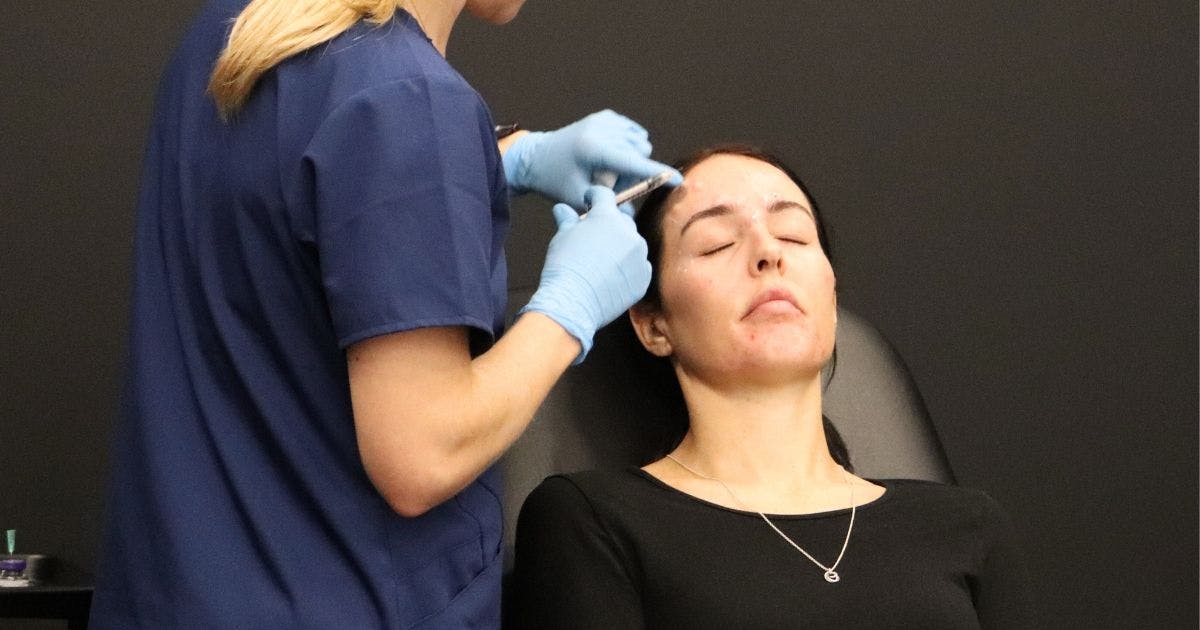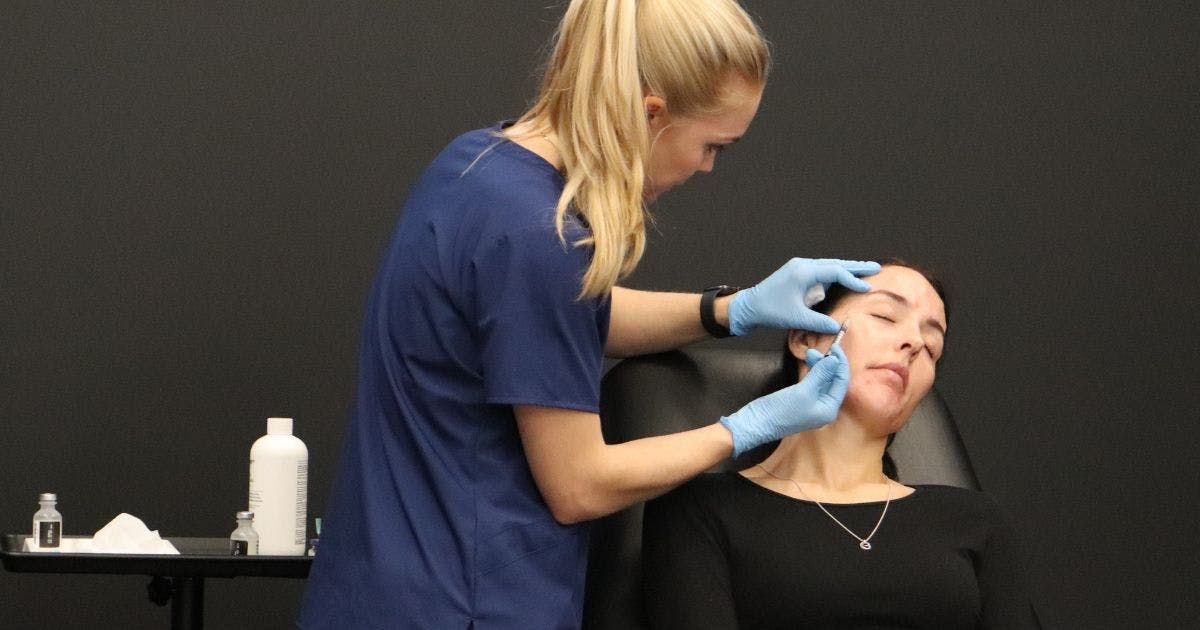Understanding Botox Needle Depth When Injecting

Understanding botox needle depth when injecting is critical knowledge for every aesthetics practitioner. You need to ensure you’re administering toxin at the correct depth to create its desired effect.
Injecting botulinum toxin at the incorrect depth can cause undesirable aesthetic effects.
Our Clinical Director and aesthetics expert, Dr Harriet Jenkins provides her advice on understanding botox needles and depth. Plus, Dr Lindsay Jones, Clinical Trainer and medical aesthetics specialist, responds to frequently asked questions, including:
- The difference needle sizes make when injecting botox
- What happens if you go too deep with the needle?
- Which toxin areas are more complex to inject?

What difference does needle size make when injecting botox?
Dr Lindsay explains, "The main effect that needle sizes make when injecting botulinum toxin is on the patient’s pain experience. The smaller the needle, the less trauma and pain is experienced. There’s less likelihood of bruising due to their smaller diameter, reducing the chances of hitting a blood vessel.”
She further notes that “From the practitioner’s point of view, smaller needles can be harder to control as they tend to be more flexible.”
What needle size should you use to inject toxin?
As needle size dictates the patient’s comfort level, “Here, at Harley Academy, we tend to use Invisible Needles. These needles are approximately 33/34 gauge for patient comfort,” Dr Harriet comments.
Can any other needle be used to administer botox?
A Harley Academy trainee recently queried whether it’s okay to use a 30g needle when injecting botulinum toxin. Dr Harriet states, “Please be assured that a 30g needle is also absolutely fine and clinically correct, and one a lot of aesthetics practitioners will use.”

How deep should the needle be when injecting botulinum toxin?
Understanding botox needle depth when injecting comes with understanding muscle anatomy and experience. Depending on which area you’re treating, it may require different depths of injection. “It also depends on which muscle group the target is,” Dr Lindsay notes.
“When administering botulinum toxin treatments to the three areas of the upper face, the only deep injections should be the procerus and medial corrugators. Otherwise, the injections should all be superficial”, she continues.
“The actual length of the needle required is dependent on the muscle bulk of the patient,” Dr Lindsay counsels. She advises using “common sense and examining your patient’s muscle bulk. If you are treating a patient with a large muscle bulk then you may have to use the full length of your needle. A patient with thin muscles would require less of the needle to get intramuscular.”
Resistance when injecting is a sign to look out for. Harley Academy’s Director of Education, Dr Kalpna Pindolia has previously stated, “If there is little-no resistance, you are likely deep, with more resistance to extrusion usually encountered when very superficial. ” You can read more on this in our article on Needle Resistance in Lateral Corrugator.
Dr Harriet further notes “The key is understanding the injection is 'deep' for the procerus and medial corrugator and 'superficial' for the lateral corrugator. Knowledge of the anatomy you are targeting is key to understanding injection depth."

What happens if you go too deep with the botox needle?
“When treating the lateral corrugator muscles we need to be superficial. This is to avoid diffusion of the botulinum toxin onto the lower frontalis muscle, or to the levator muscle of the eye. This can cause either a brow or lid ptosis respectively”, Dr Lindsay explains.
“In the frontalis, a deep treatment is likely to cause pain if you manage to hit the periosteum. However it’s unlikely to affect the aesthetic result”, she continues.
When treating the orbicularis oculi area, Dr Lindsay notes that “a deep injection could diffuse to the zygomatic muscles causing smile asymmetry. Knowing your facial anatomy will help you to avoid these complications.”
Complex botox techniques and areas to inject
Dr Lindsay highlights how, generally, “lower face botulinum toxin treatments are considered to be more complex. These tend to include gummy smiles, lip flips, chin dimples, mouth corners and facial slimming treatments.”
She explains that this is due to the number of muscles in the mid and lower face “with more complex overlapping compared to the upper face. These muscles are responsible for articulation and perioral expressions.” Dr Lindsay emphasises that “diffusion of botulinum toxin to the wrong muscle in these areas is likely to be very noticeable.”

Starting your aesthetics career with botox treatments
Upper face botox is often the first treatment new aesthetics practitioners learn and use to kickstart their injectables practice. This can be a great way to begin building a client base while you’re developing new skills.
If you’re a doctor, dentist, nurse or clinical pharmacist looking to establish an aesthetics career, there are a number of pathways open to you.
From entry-level Foundation or Core Training in Botox & Dermal Fillers to our Level 7 Diploma in Botox & Dermal Fillers - our Ofqual-regulated, postgraduate level qualification. All our aesthetic medicine training courses have been carefully designed to help healthcare professionals transition their medical knowledge into a rewarding aesthetics career.
From facial anatomy and personalised treatment planning to product selection and safe injecting techniques, you’ll gain confidence in treating your own patients in a working aesthetics clinic, with no sharing!
Ready to start your journey to becoming a safe and ethical medical aesthetics practitioner? Book a call with one of our experienced course advisors. They’ll be able to help you choose the right aesthetics training course for you, based on your personal goals.
All information correct at the time of publication
Download our full prospectus
Browse all our injectables, dermal fillers and cosmetic dermatology courses in one document
By submitting this form, you agree to receive marketing about our products, events, promotions and exclusive content. Consent is not a condition of purchase, and no purchase is necessary. Message frequency varies. View our Privacy Policy and Terms & Conditions
Attend our FREE open evening
If you're not sure which course is right for you, let us help
Join us online or in-person at our free open evening to learn more
Our Partners













STAY INFORMED
Sign up to receive industry news, careers advice, special offers and information on Harley Academy courses and services

